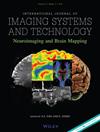An efficient skin cancer detection and classification using Improved Adaboost Aphid–Ant Mutualism model
IF 3
4区 计算机科学
Q2 ENGINEERING, ELECTRICAL & ELECTRONIC
引用次数: 0
Abstract
Skin cancer is the most common deadly disease caused due to abnormal and uncontrolled growth of cells in the human body. According to a report, annually nearly one million people are affected by skin cancer worldwide. To protect human lives from such life‐threatening diseases, early identification of skin cancer is the only precautionary measure. In recent times, there already exist numerous automated techniques to detect and classify skin lesion malignancies using dermoscopic images. However, analyzing the dermoscopic images becomes an arduous task due to the presence of troublesome features such as light reflections, illumination variations, and uneven shape and dimension. To address the challenges faced during skin cancer recognition process, in this paper, we proposed an efficient intelligent automated system to detect and discriminate the dermoscopic images into malignant or benign. The proposed skin cancer detection model utilizes the HAM10000 dataset for evaluation. The dermoscopic images acquired from the HAM10000 dataset are initially preprocessed to enhance the quality of image and thus making it fit to train the classifier. Afterward, the most significant image patterns are extracted by the AlexNet architecture without any loss of detailed information. Later on, the extracted features are inputted to the proposed Improved Adaboost‐based Aphid–Ant Mutualism (IAB‐AAM) classification model to discriminate the images into malignant and benign categories. The proposed IAB‐AAM approach witnessed extensive enhancement in classification accuracy. The enhanced performance is attributed by integrating the AAM optimization concept with the IAB model. By comparing the performance of the proposed IAB‐AAM with other modern methods in terms of different evaluation indicators namely accuracy, precision, specificity, sensitivity, and f‐measure, the efficiency of the proposed IAB‐AAM technique is analyzed. From the experimental results, it is known that the proposed IAB‐AAM technique attains a greater accuracy rate of 95.7% in detecting skin cancer classes than other compared approaches.使用改进Adaboost Aphid–Ant Mutualism模型对癌症进行有效检测和分类
皮肤癌症是最常见的致命疾病,由人体内细胞的异常和不受控制的生长引起。根据一份报告,全球每年有近100万人受到癌症的影响。为了保护人类生命不受这种危及生命的疾病的影响,早期识别癌症皮肤是唯一的预防措施。近年来,已经存在许多使用皮肤镜图像来检测和分类皮肤病变恶性肿瘤的自动化技术。然而,由于存在诸如光反射、照明变化以及不均匀的形状和尺寸等麻烦的特征,分析皮肤镜图像成为一项艰巨的任务。为了解决癌症识别过程中面临的挑战,本文提出了一种有效的智能自动化系统,用于检测和区分皮肤镜图像为恶性或良性。所提出的皮肤癌症检测模型利用HAM10000数据集进行评估。最初对从HAM10000数据集获取的皮肤镜图像进行预处理,以提高图像质量,从而使其适合训练分类器。然后,通过AlexNet架构提取最重要的图像模式,而不会丢失任何详细信息。稍后,提取的特征被输入到所提出的基于改进Adaboost的Aphid–Ant Mutualism(IAB-AAM)分类模型中,以将图像区分为恶性和良性类别。所提出的IAB-AAM方法大大提高了分类精度。通过将AAM优化概念与IAB模型集成,性能得到了增强。通过将所提出的IAB-AAM与其他现代方法在准确性、精密度、特异性、灵敏度和f-measure等不同评估指标方面的性能进行比较,分析了所提出的IAB-AAM技术的效率。从实验结果可知,与其他比较方法相比,所提出的IAB-AAM技术在检测皮肤癌症类别方面获得了95.7%的更高准确率。
本文章由计算机程序翻译,如有差异,请以英文原文为准。
求助全文
约1分钟内获得全文
求助全文
来源期刊

International Journal of Imaging Systems and Technology
工程技术-成像科学与照相技术
CiteScore
6.90
自引率
6.10%
发文量
138
审稿时长
3 months
期刊介绍:
The International Journal of Imaging Systems and Technology (IMA) is a forum for the exchange of ideas and results relevant to imaging systems, including imaging physics and informatics. The journal covers all imaging modalities in humans and animals.
IMA accepts technically sound and scientifically rigorous research in the interdisciplinary field of imaging, including relevant algorithmic research and hardware and software development, and their applications relevant to medical research. The journal provides a platform to publish original research in structural and functional imaging.
The journal is also open to imaging studies of the human body and on animals that describe novel diagnostic imaging and analyses methods. Technical, theoretical, and clinical research in both normal and clinical populations is encouraged. Submissions describing methods, software, databases, replication studies as well as negative results are also considered.
The scope of the journal includes, but is not limited to, the following in the context of biomedical research:
Imaging and neuro-imaging modalities: structural MRI, functional MRI, PET, SPECT, CT, ultrasound, EEG, MEG, NIRS etc.;
Neuromodulation and brain stimulation techniques such as TMS and tDCS;
Software and hardware for imaging, especially related to human and animal health;
Image segmentation in normal and clinical populations;
Pattern analysis and classification using machine learning techniques;
Computational modeling and analysis;
Brain connectivity and connectomics;
Systems-level characterization of brain function;
Neural networks and neurorobotics;
Computer vision, based on human/animal physiology;
Brain-computer interface (BCI) technology;
Big data, databasing and data mining.
 求助内容:
求助内容: 应助结果提醒方式:
应助结果提醒方式:


